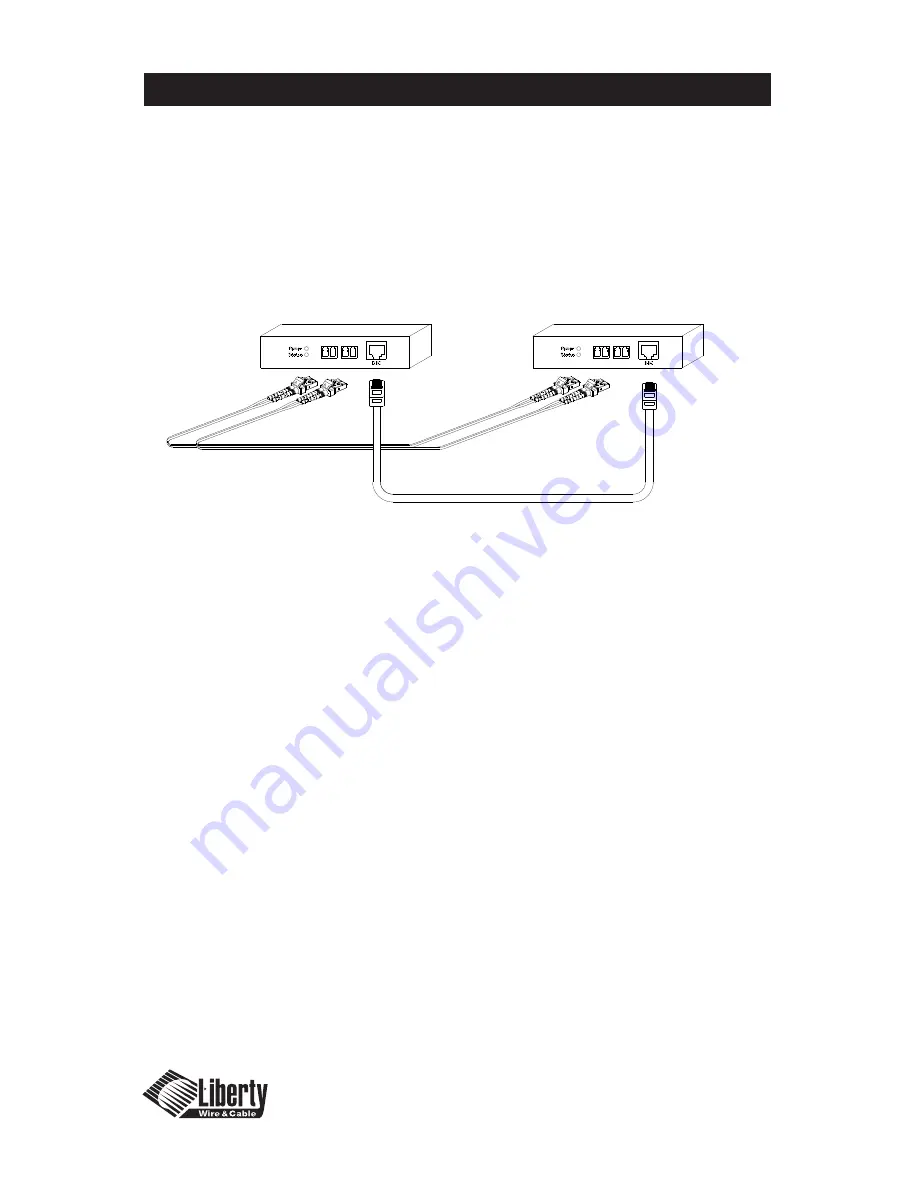
1-7
Installation Continued
Features
4.) Remove the dust covers from the Fiber Optic LC receptacles and connect each
Duplex LC cable one by one to each of the four LC receptacles. Plug A to A and
B to B. Carefully recheck polarities and ensure the duplex connectors are fully
engaged and locked in place.
5.) Connect the RJ45 plug to each RJ45C receptacle of the TX
and RX boxes.
6.) Connect the DC power supply to either the TX or the RX unit depending on
your availability of and AC power source. This will power up both of the units.
The power receptacle is located on the same side as the HDMI receptacle.
Ensure both units have power by viewing the power LED. SAFETY NOTE:
Do NOT unplug the LC connectors and look directly into the connector or
receptacle when operating. This device is regulated as Laser Class 1 and severe
eye damage can result.
7.) Power up the Display side (Display can reference Media Receiver, Computer
Monitor or Display).
8.) Power up the Source side.
9.) The Status LED on both the TX and RX units should be illuminated Green. If it
is not illuminated check the Polarity on the LC connectors. Failure of the LED to
illuminate can be caused by a poor fiber connection, broken fiber, or incorrect
polarity on the LC plugs.
a.) Tip – After initial power up shut down all displays and sources and repeat the
start up operation
b.) Do not “Hot Plug” the TX and RX units. Ensure sources and displays are
powered down prior to hookup.
10.) Note: It is recommended to use the longest run of cable between the source
and the Fiber Optic Extender followed by a shorter run when possible to reap
the greatest benefit of the signal boost.
11.) The length of the HDMI or DVI cable on the source side should be 8 meters
or less due to source signal inconsistencies. The length from the RX unit to the
display should be one size less then the source side. For example an 8 meter
cable on the source would have a 7 meter or shorter cable on the display side.
4
3
2
1
3
4
1
2
DL-HDFO TX Unit
DL-HDFO RX Unit
Installation Procedures Continued
4.) Remove the dust covers from the Fiber Optic LC receptacles and connect each Duplex LC cable
one by one to each of the four LC receptacles. Plug A to A and B to B. Carefully recheck
polarities and ensure the duplex connectors are fully engaged and locked in place.
5.) Connect the RJ45 plug to each RJ45C receptacle of the TX and RX boxes.
6.) Connect the DC power supply to either the TX or the RX unit depending on your availability of
and AC power source. This will power up both of the units. The power receptacle is located on
the same side as the HDMI receptacle. Ensure both units have power by viewing the power LED.
SAFETY NOTE:
Do NOT unplug the LC connectors and look directly into the connector or
receptacle when operating. This device is regulated as Laser Class 1 and severe eye damage can
result.
7.) Power up the Display side (Display can reference Media Receiver, Computer Monitor or Display).
8.) Power up the Source side.
9.) The Status LED on both the TX and RX units should be illuminated Green. If it is not illuminated
check the Polarity on the LC connectors. Failure of the LED to illuminate can be caused by a poor
fiber connection, broken fiber, or incorrect polarity on the LC plugs.
a.) Tip – After initial power up shut down all displays and sources and repeat the start up
operation
b.) Do not “Hot Plug” the TX and RX units. Ensure sources and displays are powered down
prior to hookup.
10.) Note: It is recommended to use the longest run of cable between the source and the Fiber Optic
Extender followed by a shorter run when possible to reap the greatest benefit of the signal boost.
11.) The length of the HDMI or DVI cable on the source side should be 8 meters or less due to source
signal inconsistencies. The length from the RX unit to the display should be one size less then the
source side. For example an 8 meter cable on the source would have a 7 meter or shorter cable on
the display side.
Page 1-7































